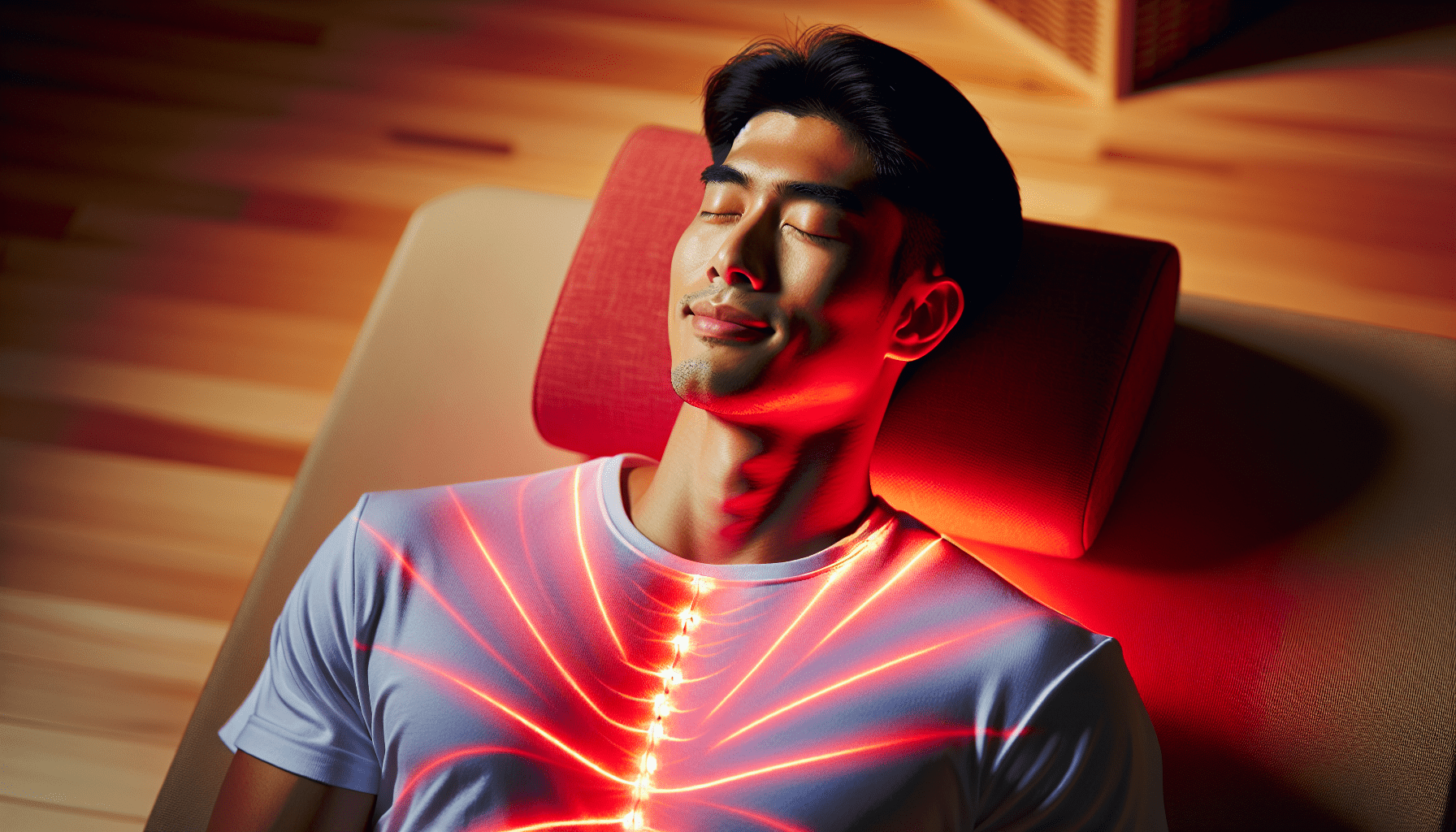Welcome to the world of red light therapy and its impact on myofascial pain! By using specific wavelengths of red light, this innovative therapy has been shown to help reduce inflammation, improve circulation, and decrease muscle tension in the affected areas. Whether you’re dealing with chronic pain or simply looking for a non-invasive treatment option, red light therapy may be just what you need to find relief from myofascial pain.
How Does Red Light Therapy Affect Myofascial Pain?
You might have heard about red light therapy as a revolutionary treatment for various conditions, but how does it specifically impact myofascial pain? In this article, we will explore the benefits of red light therapy for relieving myofascial pain and how it works to alleviate discomfort and promote healing.

Understanding Myofascial Pain
Before diving into how red light therapy can help with myofascial pain, it’s essential to understand what myofascial pain is. Myofascial pain syndrome is a chronic condition characterized by pain and inflammation in the muscles and surrounding connective tissue known as fascia. This condition often manifests as trigger points, which are tender areas in the muscle that can cause local or referred pain when stimulated. Myofascial pain can be debilitating, affecting your ability to move freely and perform daily activities.
How Red Light Therapy Works
Red light therapy, also known as low-level laser therapy (LLLT) or photobiomodulation, involves the use of low-intensity red light wavelengths to stimulate healing and reduce inflammation in the body. When applied to the skin, red light penetrates the tissues and is absorbed by the mitochondria in the cells. This process leads to an increase in cellular energy production, which promotes tissue repair, reduces inflammation, and relieves pain.
Understanding the Mechanism of Action
The red light wavelengths used in therapy stimulate the production of adenosine triphosphate (ATP) in the mitochondria, which is the energy currency of the cell. This increase in ATP production enhances cellular function and accelerates the healing process. Additionally, red light therapy helps to reduce oxidative stress and inflammation in the tissues, leading to pain relief and improved tissue repair.

Benefits of Red Light Therapy for Myofascial Pain
Now that we have a better understanding of how red light therapy works, let’s explore the specific benefits of this treatment for myofascial pain:
Pain Relief
One of the primary benefits of red light therapy for myofascial pain is pain relief. By reducing inflammation and promoting tissue repair, red light therapy can alleviate the discomfort associated with myofascial trigger points and muscle pain. Many patients report a significant reduction in pain after a few sessions of red light therapy.
Improved Blood Circulation
Red light therapy has been shown to improve blood circulation in the affected areas, which can help to reduce muscle stiffness and promote healing. By increasing blood flow to the muscles and fascia, red light therapy can accelerate the removal of metabolic waste products and deliver essential nutrients and oxygen to the tissues.
Muscle Relaxation
Another benefit of red light therapy for myofascial pain is muscle relaxation. The gentle warmth produced by the red light can help to relax tense muscles and reduce muscle spasms. This can be especially beneficial for individuals with chronic myofascial pain who experience muscle tightness and stiffness.
How to Use Red Light Therapy for Myofascial Pain
If you are considering red light therapy for myofascial pain, it is essential to know how to use this treatment effectively. Here are some tips for using red light therapy for myofascial pain relief:
Consult with a Healthcare Professional
Before starting red light therapy for myofascial pain, it is crucial to consult with a healthcare professional or a licensed therapist. They can assess your condition, recommend the appropriate treatment protocol, and monitor your progress throughout the therapy sessions.
Choose the Right Device
When selecting a red light therapy device for myofascial pain, opt for a high-quality device that emits the correct red light wavelengths (usually between 630-660 nanometers). Consider factors such as the power output, treatment area size, and safety features when choosing a red light therapy device.
Follow the Recommended Protocol
To experience the full benefits of red light therapy for myofascial pain, it is essential to follow the recommended treatment protocol. This may include the frequency and duration of therapy sessions, as well as the proper placement of the red light device on the affected areas.
Tips for Maximizing the Benefits of Red Light Therapy
To maximize the benefits of red light therapy for myofascial pain, consider the following tips:
Maintain a Healthy Lifestyle
In addition to red light therapy, maintaining a healthy lifestyle can help to support the healing process and reduce myofascial pain. Make sure to eat a balanced diet, stay hydrated, get regular exercise, and practice stress-reducing techniques such as yoga or meditation.
Stay Consistent with Treatment
Consistency is key when it comes to red light therapy for myofascial pain. Make sure to attend all scheduled therapy sessions, follow the recommended treatment protocol, and communicate any improvements or setbacks with your healthcare provider.
Combine Red Light Therapy with Other Treatments
While red light therapy can be effective on its own, combining it with other treatments such as physical therapy, massage, or chiropractic care can enhance the results. Consult with your healthcare provider to create a comprehensive treatment plan that addresses all aspects of your myofascial pain.
Conclusion
In conclusion, red light therapy is a safe and effective treatment option for individuals suffering from myofascial pain. By stimulating cellular energy production, reducing inflammation, and promoting tissue repair, red light therapy can help alleviate pain, improve muscle function, and enhance overall quality of life. If you are experiencing myofascial pain, consider incorporating red light therapy into your treatment regimen to experience the numerous benefits it has to offer. Remember to consult with a healthcare professional before starting any new treatment and to follow the recommended protocol for optimal results.
